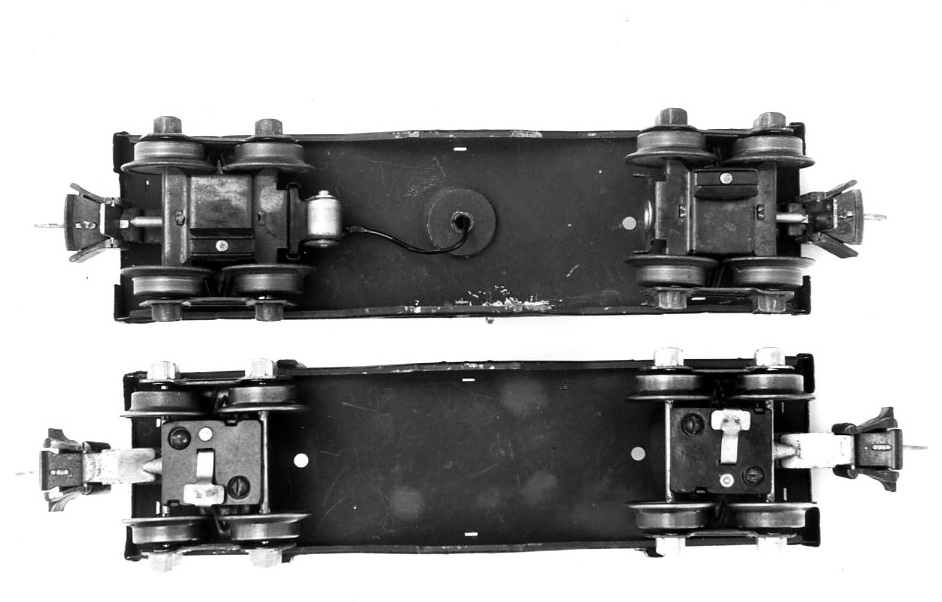Trees are as essential to a landscape as mountains, hills, and rivers. Those of you living in (and/or modeling) the desert, will have to overlook my exuberance for trees. In this article I’d like to add to my previous discussions of conifer, deciduous, and wannabe trees, to pursue my favorite subject further. (See the list of past “Miniscaping” articles on trees.)
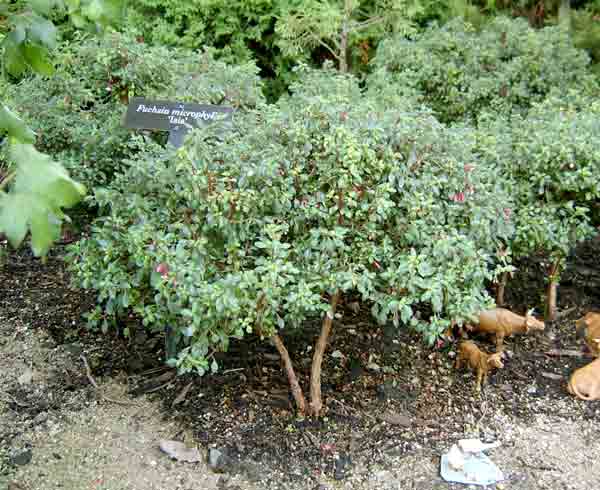
To be in scale for our railroads and believably tree-like does not require a plant to be a mutant or exotic. There are a number of available plants that will pass muster. Some will require a bit of imagination and judicious pruning to see the possibilities. Others just seem made to order for life in a garden railway. I’ll share some of both that I’ve seen and feel worth consideration.
The Chicago Botanical Garden has tended some fuchsia plants for a few years, keeping them inside during the winter and setting them out each spring. With a touch of creative pruning, the staff has created a wonderful little grove of “trees” where cows can get out of the sun for a rest (photo 1). This variety is little-leaf fuchsia (Fuchsia microphylla ‘Isis’, Zones 7-10). It has small, dark-green leaves densely covering reddish branches and stems. Tiny, 14″, reddish-pink, trumpet-shaped blooms add color from early summer until frost. These fuchsias can be trained as small single-trunk trees or allowed to grow as small dome-shaped shrubs. They prefer part sun to light shade but will tolerate full sun if the soil is kept moist.
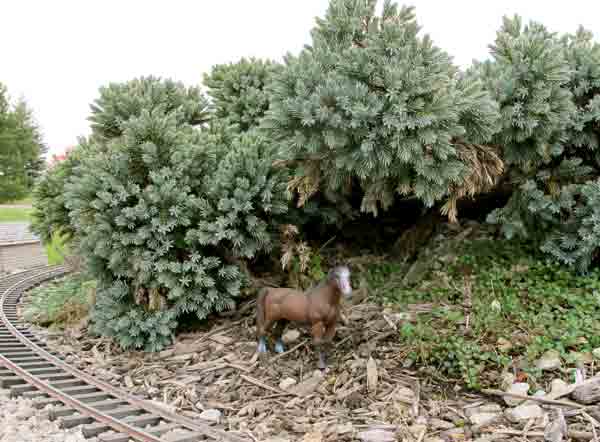
There are several small junipers that make good trees, including the narrowly vertical Juniperus communis ‘Compressa’ and the mounding J. squamata ‘Blue Star’ (both Zones 4-8). The latter is a real workhorse of the genus. It has small needles that are a lovely shade of blue-green, and grows slowly to 1-2′ tall by 3′ wide. Often, as it matures, it develops into a low, irregular shrub that looks for all the world like a grove of evergreen trees clumped together (photo 2). The only pruning that I’ve ever had to do on this plant was to cut out an occasional dead branch or trim back any foliage that got too close to the track. You can make sizable wooded areas easily and inexpensively if you plant a number of these shrubs and have the patience to let them grow for a few years.
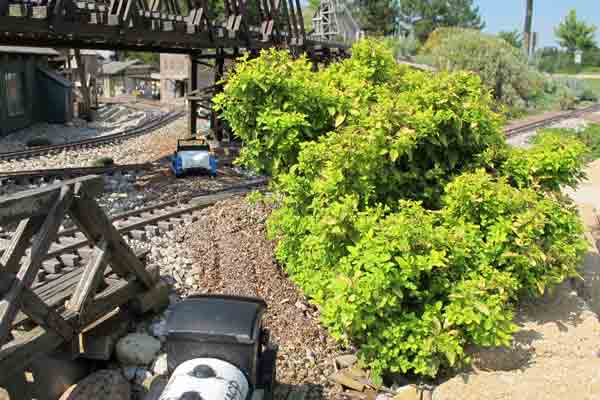
There are two species of spirea that I find useful in making believable clumps of in-scale trees. Golden Elf Japanese spirea (Spiraea japonica ‘Golden Elf’, Zones 4-8) produces a low growing, dense shrub (12″ tall by 18″ wide) with lively, golden-green, 12″ leaves topped with small, pink flower clusters in the late spring. It can be trimmed and trained easily but doesn’t require any shear work to look great. I keep mine trimmed back from the dirt road that runs next to it (photo 3); otherwise it does its own thing delightfully.
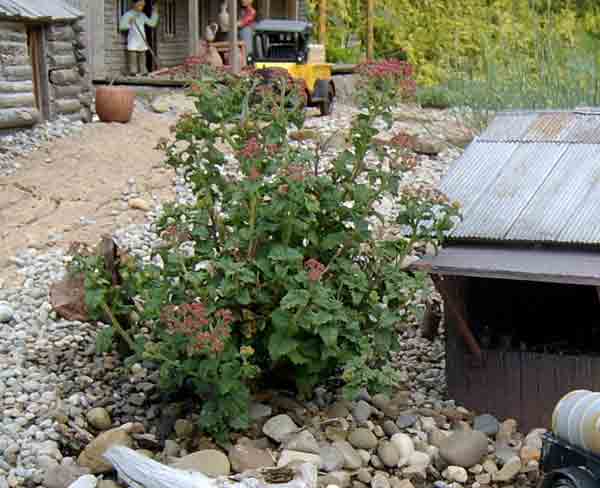
The other spirea is even smaller. Crisp-leafed spirea (S. bullata ‘Crispa’, Zones 4-9), growing about 8″ tall, has tiny leaves that are thick, dark bluish-green above and gray-green below. Deep rosy-pink flowers appear in mid-summer on dense 1″-wide sprays. One plant nicely mimics a clump of small trees (photo 4), and several spaced close together can produce the look of a wild thicket (photo 5). Plant
spireas in moist, well-drained soils, in full sun.
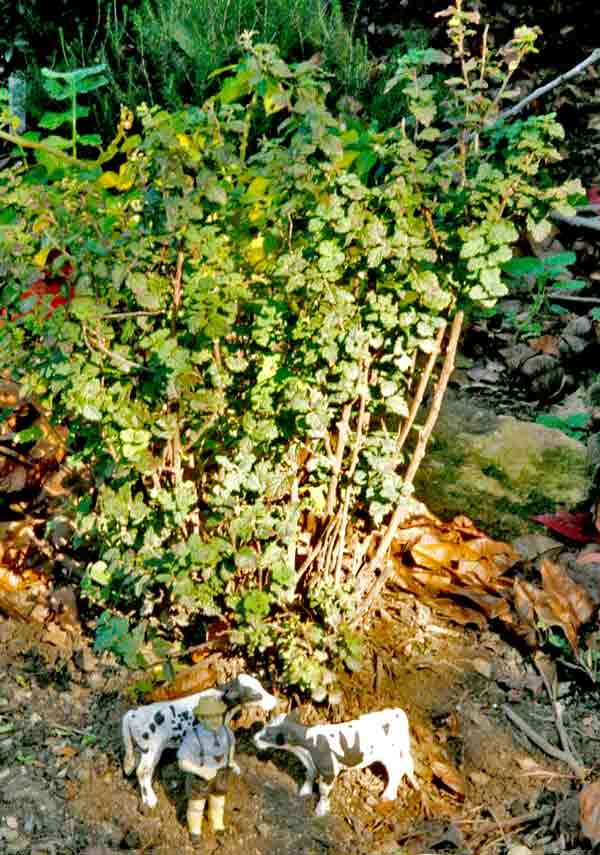
There’s a tiny member of the holly family that makes a great little tree. Beehive holly, (Ilex crenata ‘Beehive’, Zones 4-10) grows slowly to 10″ tall (photo 6). It requires little pruning, except to expose its trunk. It has dark-green 38″ leaves that are evergreen, like those of its bigger kin. Hollies need rich, moist, slightly acidic soil with good drainage and they appreciate a thick mulch. These hollies will not tolerate drought. They grow best in partial shade but will tolerate full sun if the soil is kept moist.
Another common plant shrunk to garden-railroad size is Bronx dwarf forsythia (Forsythia viridissima ‘Bronxensis’, Zones 5-8). Left to its own ways it will grow 18″ tall by 18″ wide but, with some judicious pruning, can be easily made into a tree-like clump, sporting 1″ leaves arranged in pleasing whorls (photo 7). Forsythias grow in full sun to part shade and do best in organic, loamy soil.
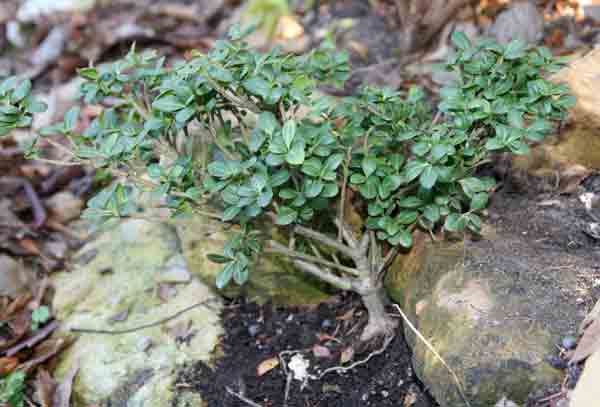
Dwarf gray lavender cotton (Santolina chamaecyparissus ‘Nana’, Zones 5-9) will lend a touch of soft texture to the wooded landscape (photo 8). At maturity it will reach 18″ high and, with light pruning, can pass for an interestingly textured tree. Lavender cotton requires full sun and a well-drained soil amended with sand or gravel, and is drought tolerant.
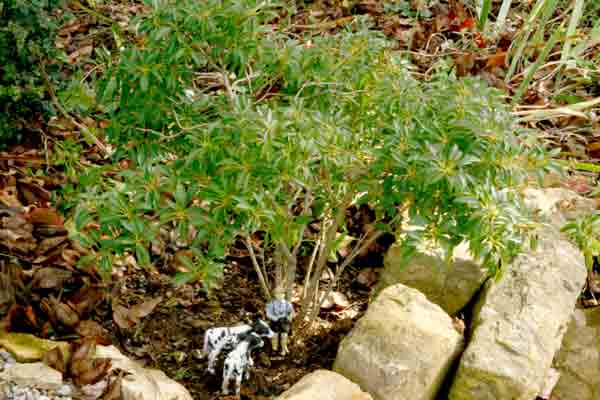
Mark Langan photo
An unusual specimen that can make a real conversation piece for your railroad landscape (photo 9) is dwarf Japanese wisteria (Wisteria floribunda nana, one cultivar being ‘Kofuji’, all Zones 5-8). In its natural form it will grow slowly to form a dense shrub of twiggy branches with tiny leaves. It is prized by bonsai aficionados for easy training into tree forms with gnarly main trunks. It can grow to 2′ tall and will occasionally produce a flowering branch a bit longer. Wisterias prefer full sun in moist, well-drained soil with summer watering.
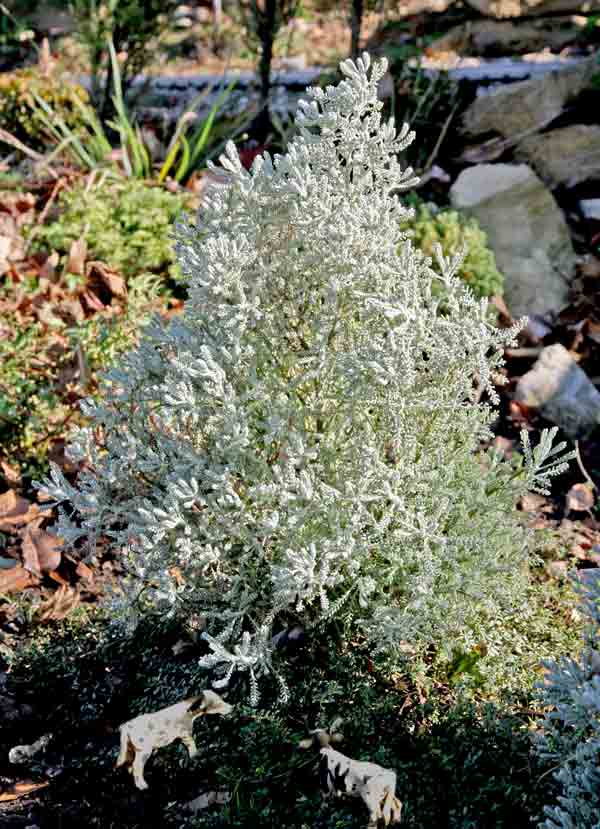
Finally, there is the New Zealand manuka, a.k.a. Australian tea tree, which has a wonderful miniature cultivar called Kiwi (Leptospermum scoparium ‘Kiwi’, Zones 9-10). It grows to 18″ tall with
dark, purplish-to-green, 12″ leaves and deep-rose 12″ flowers all summer. It is tropical and stays green year-round. It is favored by miniature-plant lovers and looks like it could be trimmed to make a delightful tree. I was so taken by the larger wild manuka I saw in New Zealand that I had to mention it here as something you warmer-zone railroad gardeners might want to consider.
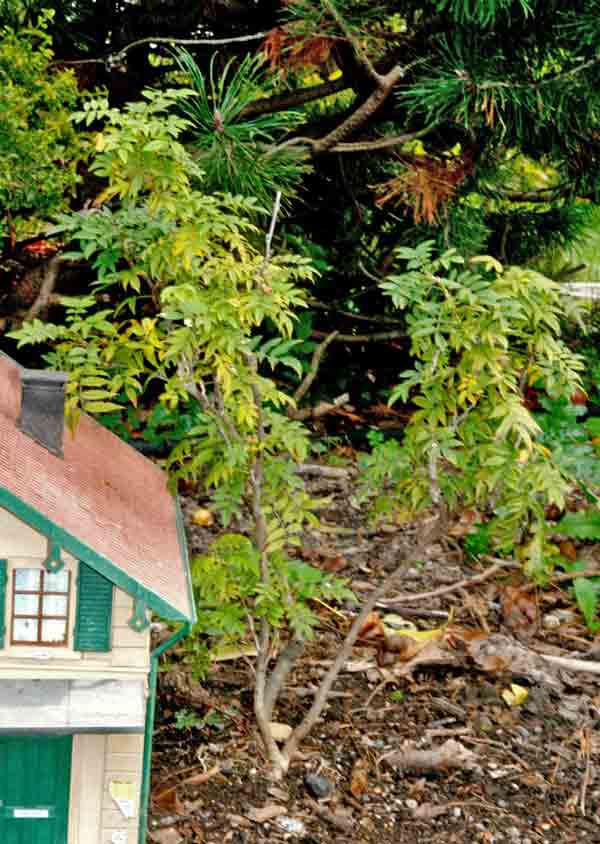
Previous “Miniscaping” articles about in-scale trees
February 2008: Small conifers
August 2008: Trees for Zones 9-10
June 2011: Deciduous tree look-alikes
October 2011: Miniature deciduous trees






